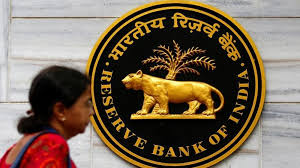India’s central bank will soon have a new group of policy makers setting interest rates and possibly a change to its mandate too.
The six-member Monetary Policy Committee will have four new faces this year: the terms of three independent people on the panel expire at the end of next month and one internal member retired in June. In addition, the inflation-targeting framework is already under review before the current five-year mandate ends next year.
The overhaul comes at a time of heightened uncertainty in India, where the coronavirus has infected more than 1 million people and the economy is heading toward its biggest contraction in four decades. With the Reserve Bank of India taking on the bulk of the stimulus burden in the absence of more stronger fiscal support, market participants are wary of any sharp shifts in policy stance.
Shilan Shah, a senior economist at Capital Economics Ltd. in Singapore, said he doesn’t see a risk of that happening.
“In theory, it could be an issue as markets will be looking for as much stability as possible during these uncertain times,” he said. “In practice though, a re-constitution of the MPC is unlikely to make any meaningful difference. The MPC typically follows the lead of the governor,” he said.
Governor Shaktikanta Das has led the committee in cutting interest rates by 115 basis points this year, and has signaled that policy will remain loose to support the economy.
A selection panel — which includes Das and Economic Affairs Secretary Tarun Bajaj — has been formed to pick the three new external MPC members to replace Chetan Ghate, Ravindra Dholakia and Pami Dua. The law says they’re not eligible for re-appointment, but the RBI had earlier written to the Finance Ministry seeking an extension of their four-year terms until March.
The other MPC member who will be replaced is Janak Raj, an executive director at the RBI, who retired last month.
Amol Agrawal, an assistant professor in the department of economics and public policy at Ahmedabad University, said he’s generally not in favor of reappointing the policy makers, “but given the times, we might wish for some continuity.”
The review of the inflation-targeting mechanism may also bring changes to the monetary policy mandate, which was set in 2016 and requires the RBI to keep inflation at the 4% midpoint of a 2%-6% range. Economists like Bloomberg Economics’ Abhishek Gupta have argued that the headline inflation measure used in the current framework is too volatile and the RBI should rather target core prices, which strips out oil and food costs.
“I would even recommend a nominal growth target which is more appropriate for a country like India that is prone to supply shocks,” said Rudra Sensarma, a professor of economics at the Indian Institute of Management, Kozhikode.





































